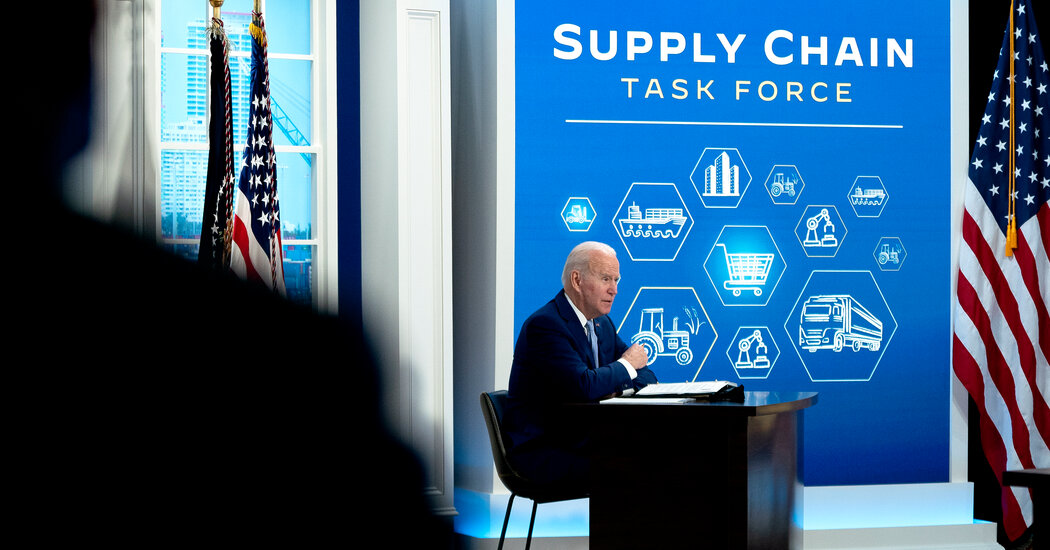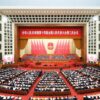Joe Biden was Barack Obama’s vice president. His Treasury secretary, Janet Yellen, was Obama’s pick to lead the Federal Reserve. The director of Biden’s National Economic Council, Brian Deese, was deputy director of Obama’s National Economic Council. His chief of staff, Ron Klain, was his chief of staff for the first two years of the Obama administration and then Obama’s top Ebola adviser. And so on.
The familiar names and faces can obscure how different the new administration, in practice, has become. The problems Biden is facing are an almost perfect inversion of the problems Obama faced. The Obama administration was bedeviled by crises of demand. The Biden administration is struggling with crises of supply.
For years, every conversation I had with Obama administration economists was about how to persuade employers to hire and consumers to spend. The 2009 stimulus was too small, and while we avoided a second Great Depression, we sank into an achingly slow recovery. Democrats carried those lessons into the Covid pandemic. They met the crisis with overwhelming fiscal force, joining with the Trump administration to pass the $2.2 trillion CARES Act and then adding the $1.9 trillion American Rescue Plan, the trillion-dollar infrastructure bill and the assorted Build Back Better proposals on top. They made clear that they preferred the risks of a hot economy, like inflation, to the threat of mass joblessness.
“We want to get something economists call full employment,” Biden said in May. “Instead of workers competing with each other for jobs that are scarce, we want employers to compete with each other to attract work.”
That they have largely succeeded feels like the best-kept secret in Washington. A year ago, forecasters expected unemployment to be nearly 6 percent in the fourth quarter of 2020. Instead, it fell to 3.9 percent in December, driven by the largest one-year drop in unemployment in American history. Wages are high, new businesses are forming at record rates, and poverty has fallen below its prepandemic levels. Since March 2020, Americans saved at least $2 trillion more than expected. And that’s not just a function of the rich getting richer: a JPMorgan Chase analysis found the median household’s checking account balance was 50 percent higher in July 2021 than in the months before the pandemic.
It is easy to imagine the wan recovery we could’ve had if the mistakes of 2009 and 2010 had been repeated. Instead, we met the pandemic with tremendous, perhaps excessive, fiscal force. We fought the recession and won. The problems we do have shouldn’t obscure the problems we don’t.
But we do have problems. Year-on-year inflation is running at 7 percent, its highest rate in decades, and Omicron has shown that the Biden administration wasted months of possible preparation. It is not to blame for the new variant, but it is to blame for the paucity of tests, effective masks and ventilation upgrades.
The conversations I have with the Biden administration’s economists are very different from the conversations I had with the Obama administration’s economists, even when they’re the same people. Now the discussion is all about what the economy can produce and how fast it can be shipped. They need companies to make more goods and make them faster. They need more chips so there can be more cars and computers. They need ports to clear more shipments and Pfizer to make more antiviral pills and shipping companies to hire more truckers and schools to upgrade their ventilation systems.
Some of these problems reflect the Biden administration’s successes. (Read my colleague Paul Krugman for more on this.) For all the talk of supply chain crises, many of the delays and shortages reflect unexpectedly strong demand, not a pandemic-induced breakdown in production. Supply chains are built to produce the goods that companies think will be consumed in the future. Expectations were off for 2021, in part because forecasters thought demand would slacken as people lost work and wages, in part because the fiscal response was massively larger than anyone anticipated and in part because when people couldn’t go out for meals and movies, they bought things instead. Overall spending is more or less on its prepandemic trend, but the composition of spending has changed: Americans purchased 18 percent more physical goods in September 2021 than in February 2020.
Now the Biden administration fears that its supply problems will wipe out its demand successes. In recent remarks, Biden took aim at those who would lower prices by breaking the buying power of the working class. “If car prices are too high right now, there are two solutions,” Biden said. “You increase the supply of cars by making more of them, or you reduce demand for cars by making Americans poorer. That’s the choice. Believe it or not, there’s a lot of people in the second camp.”
He’s right, but this is a practical fight, not just an ideological one, and the Biden administration is making its own mistakes. His administration is suffering right now from directly mismanaging Covid supplies. It did an extraordinary job in its first months, flooding the country with vaccines. Today, any adult who wants one, or three, can get the shots. But vaccines aren’t the only public health tool that matters, and there was every reason to believe the Biden administration knew it. The American Rescue Plan had about $20 billion for vaccine distribution, but it had $50 billion to expand testing and even more than that to retrofit classrooms so teachers and children alike would feel safe. Where did that money go?
Getting the pandemic supply chain right would help ease every other supply chain, too. If Americans could move about their lives more confidently, they could buy services instead of things, and if companies could test and protect their work forces more effectively, they could produce and ship more goods.
But the Biden administration hasn’t fully embraced its role as an economic planner. When Jen Psaki, the White House press secretary, was asked about testing shortages in December, she shot back, “Should we just send one to every American?”
Psaki’s snark soon became Biden’s policy. The administration is launching a website where any family can request four free tests. That’s a start, but no more than that. For rapid testing to work, people need to be able to do it constantly. But because the administration didn’t create the supply of tests it needed months ago, there aren’t enough tests for it or anyone else to buy now. Part of this reflects the ongoing failure of the Food and Drug Administration to approve many of the tests already being sold in Europe.
The same is true, I’d argue, about masks. There’s simply no reason every American can’t pick up an unlimited supply of N95s and KN95s at every post office, library and D.M.V. Instead, people are buying counterfeit N95s on Amazon and wearing cloth masks that do far less to arrest spread. Now the Biden administration is moving toward supplying masks. But more needs to be done: How about ventilation? How about building the vaccine production capacity needed to vaccinate the world and prevent future strains from emerging? How about building capacity to produce more antiviral pills so that the next effective treatment can ramp up more quickly?
For decades, Democrats and Republican administrations alike believed the market would manage supply. We live in the wreckage of that worldview. But it held for so long that the U.S. government has lost both the muscle and the confidence needed to manage supply, at least when it comes to anything other than military spending. So Biden’s task now is clear: to build a government that can create supply, not just demand.
This may not be the presidency Biden prepared for, but it’s the one he got.
The Times is committed to publishing a diversity of letters to the editor. We’d like to hear what you think about this or any of our articles. Here are some tips. And here’s our email: letters@nytimes.com.
Follow The New York Times Opinion section on Facebook, Twitter (@NYTopinion) and Instagram.




























